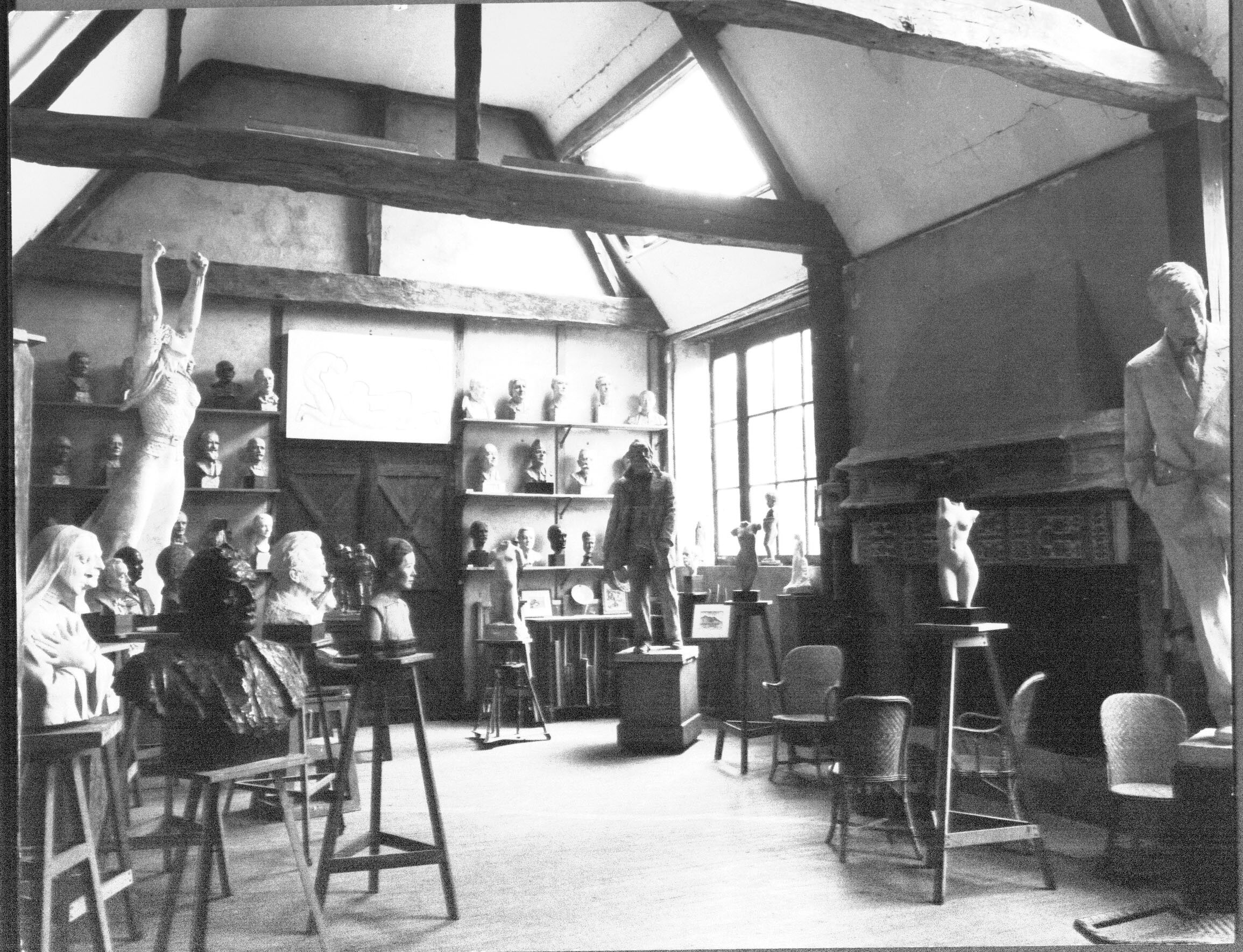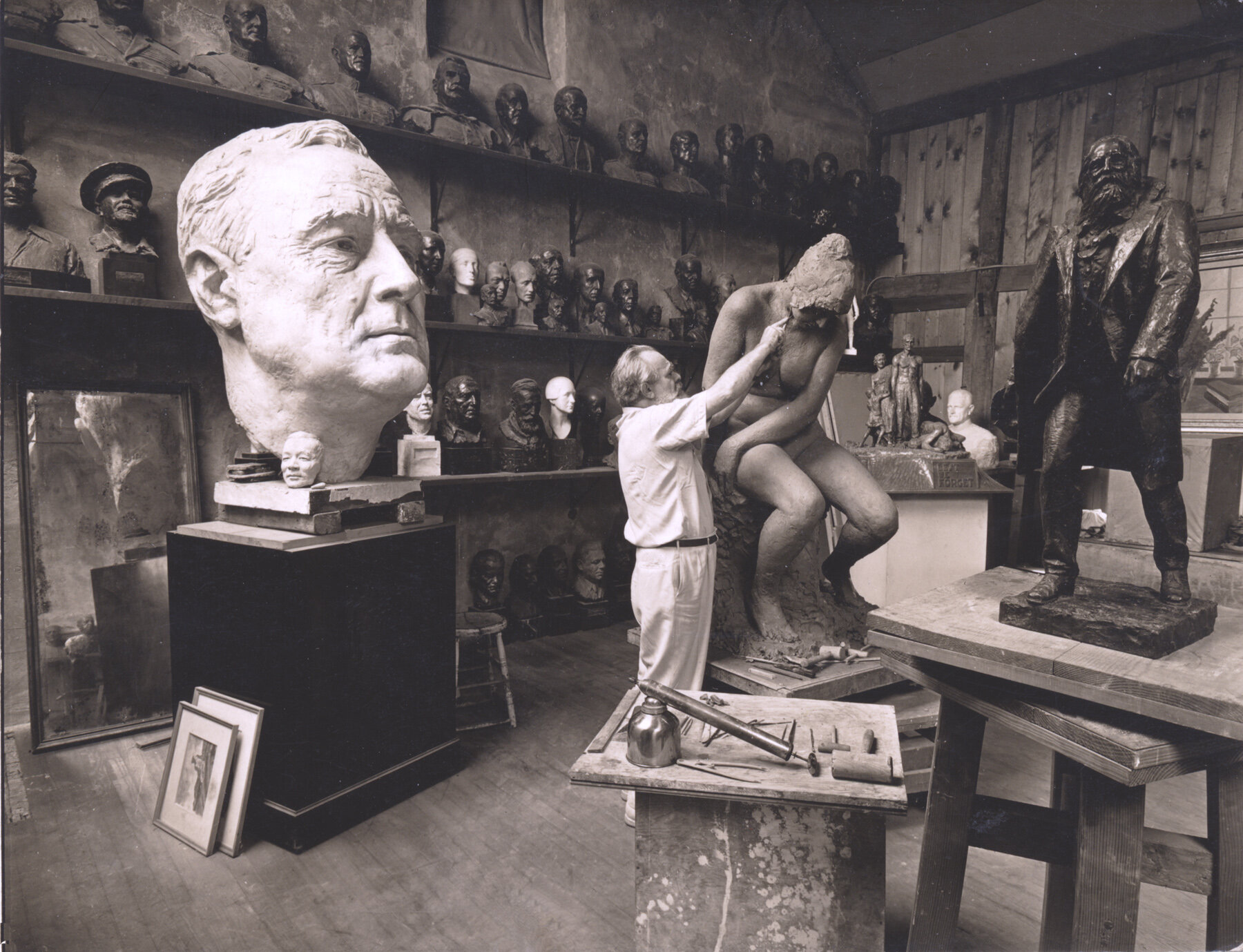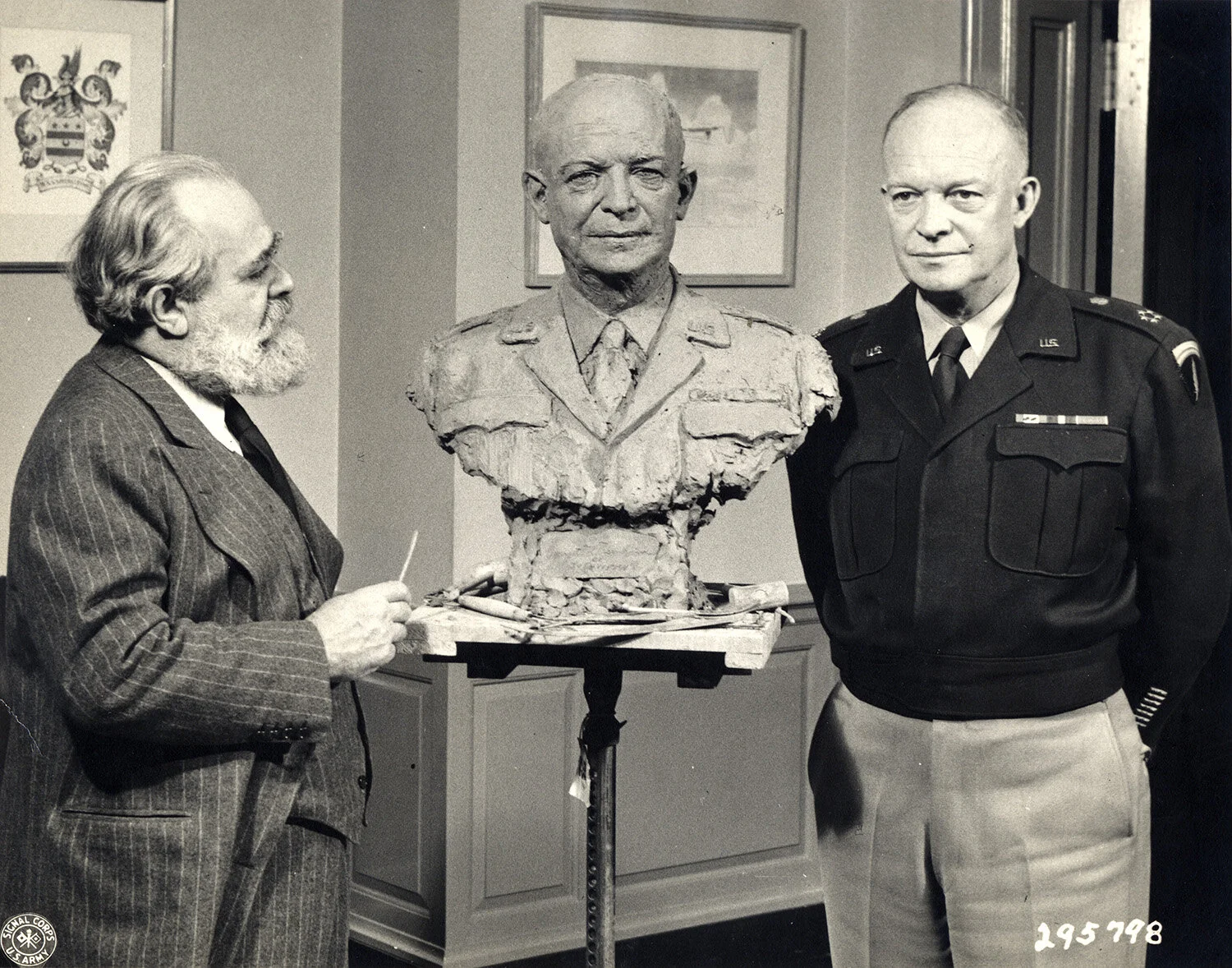My Grandfather, Jo Davidson
Although I was still a toddler when my grandfather, Jo Davidson, passed away in 1952, I felt his presence everywhere around me. When my family and I moved in the fifties from New York City to the Loire Valley in France, we moved into my grandfather and grandmother Yvonne’s country home, Becheron, that they bought in 1926. Yvonne was a fashion designer and actress. Jo Davidson who grew up on the lower East Side of New York City was an American artist who was famous for his sculpted portraits.
Becheron in Saché, France is where Jo had one of his artist studios and it was filled with his sculptures and paintings. He also had a very large artist studio in Paris in the 16th Arrondissement.
This is Becheron, my grandfather’s country home that I grew up in.
Jo’s artist studio at Becheron in Saché, France.
My Grandmother Yvonne in the front garden at Becheron.
This is a photo of my grandfather working in his Paris studio. He is surrounded by portraiture busts, including that of Franklin Delano Roosevelt, of which a 6 ft. bronze version is installed at the Four Freedoms Park on Roosevelt Island, New York.
This is the bronze sculpture (6 ft. high) of FDR by Jo Davidson at Four Freedoms Park in New York City. My family and the gallery owners representing Jo’s work in New York City were invited to the Inauguration Day of Four Freedoms Park in 2012. It was a memorable event moderated by Tom Brokaw with many dignitaries and speakers, one of whom was Bill Clinton.
Jo Davidson created around 450 portraits in his lifetime, a feat that may have never been repeated to this day. The subjects of these portraits were from all walks of life. They were historical figures, presidents, writers, thinkers, artists, politicians, generals, socialites, actors and other people who inspired him.
My grandfather worked in clay and with the help of his assistant, Gino Staggetti, his work was turned into bronzes, stone carvings or terracotta. When creating a portrait in clay he never asked his sitters to pose. Instead, he engaged them in conversation to get a feeling of their personality. You can notice that he varied the style of the portrait depending on his closeness with the sitter. Whereas, a famous First World War general would be in more of a classic rendition, an artist friend would get a much freer and modern treatment. Still, one can identify all of this portraits to be from his hands.
Here are examples illustrating his adaptive approach to portraits:
This is a photo of my grandfather working on J. D. Rockefeller’s portrait. Here you can see his more formal approach.
Here is another example of Jo’s more formal approach. This is a portrait of Marechal Foch who was Supreme Allied Commander by the end of the First World War. This bust was done in 1918 at Allied headquarters one week after the Armistice. My grandfather nailed the weariness in the eyes and the steadiness of character of the French officer.
This is a photo of American painter John Marin who was Jo’s friend. Here you can see one of his freer and less traditional approaches.
In 2006, the Smithsonian Institution's National Portrait Gallery opened a permanent exhibition, "Jo Davidson: Biographer in Bronze", showcasing fourteen of his works in terracotta and bronze. He also did heroic and life-size figurative sculptures in bronze and stone. Most noteworthy are Will Rogers and Robert LaFollette which can be found in the National Statuary Hall Collection in the United States Capitol building.
Here is a photo of the bronze sculpture (1939) Jo Davidson did of Will Rogers that is in the United States Capitol building. It is very often in the background during television interviews of members of the Congress.
This is a photo of the marble sculpture (1929) by Jo Davidson of Senator Robert M. La Follette. It is in the National Statuary Hall Collection in the United States Capitol Building.
Here are a few examples of my grandfather’s many portraits:
Helen Keller was a dear friend of my grandfather. Here is a photo of Helen Keller in 1942 showing one of the two portraits Jo did of her.
This photo was taken at the Stork Club in New York City, where Helen Keller liked to go to feel the music through the vibrations on the floor. Jo is seen here signing into Helen’s hand.
Jo Davidson with General Dwight D. Eisenhower (later President) in 1948.
Jo Davidson and Charlie Chaplin in 1924.
Jo Davidson and the finished clay of FDR. It was later cast into bronze and another carved in marble. The marble is now in the National Portrait Gallery. Jo was a friend of FDR. This photo was taken by the Press at the White House.
Arthur Conan Doyle and Jo Davidson in 1930.
Jo Davidson and a young Frank Sinatra in 1946.
This photo taken by Man Ray in 1923, shows one moment within the close friendship that Jo shared with Gertrude Stein. This clay was cast into bronze. There is one installed at Bryant Park in New York City and another in the collection of the Whitney Museum of American Art in New York.
These were just a few of the photos that I have of my grandfather’s around 450 sitters. Some other interesting sitters were Albert Einstein, D. H. Lawrence, Rudyard Kipling, Carl Sandburg, James Barrie, Clarence Darrow, James Joyce, George Bernard Shaw, Woodrow Wilson, H. G. Wells and Mahatma Gandhi.
Here are two photos of my grandfather not at work in his studio:
Jo Davidson with Pablo Picasso in 1948.
Jo Davidson with his friend H. G. Wells in 1930.
These are just a few photos and thoughts about my Grandfather Jo Davidson. He was a true American success story.




















